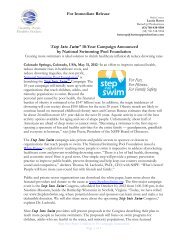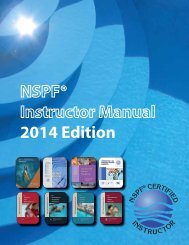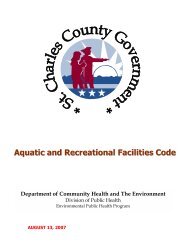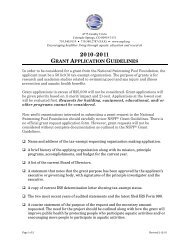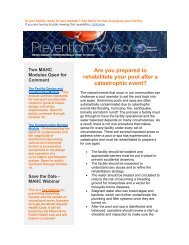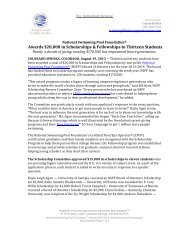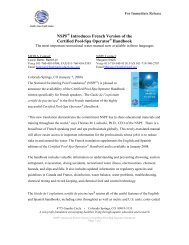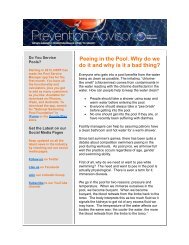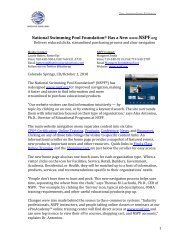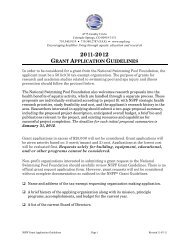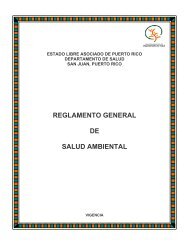English Instructor Manual (PDF) - Metric Version - National ...
English Instructor Manual (PDF) - Metric Version - National ...
English Instructor Manual (PDF) - Metric Version - National ...
You also want an ePaper? Increase the reach of your titles
YUMPU automatically turns print PDFs into web optimized ePapers that Google loves.
State and Local Code Supplement**<br />
** Note: This content must be taught on the 2nd day of a two day class<br />
or as part of one-day Pool Operator Fusion Class.<br />
Suggested Time:<br />
PowerPoint Slides:<br />
Materials:<br />
60 minutes<br />
State & Local Code Supplement Slides<br />
Material Safety Data Sheet (MSDS)<br />
Copy of local or state codes<br />
Appendices A-2 and B-1 (from Pool & Spa Operator Handbook)<br />
CDC Model Aquatic Health Code<br />
Objectives: At the end of this lesson, the student will be able to:<br />
1. List the local and state codes that apply to pool operations in his/her state<br />
2. List the types of records that must be kept by a pool operator<br />
3. Compare the local state code with the model aquatic health code as it applies to the<br />
operator’s responsibilities (optional)<br />
Leading Questions:<br />
What are the most important codes applicable to your operations?<br />
What records does the local or state health department require relative to your<br />
operation?<br />
Do you know the required turnover rate required in your state or county?<br />
Do you know if there is a maximum patron load for your facility?<br />
Key Points: Review the chemical test typically recommended by the industry and compare to the<br />
local health code requirement. These include:<br />
Disinfectant, pH, calcium hardness, total alkalinity, cyanuric acid, etc. (See parameters<br />
in Appendix B-1).<br />
Facility design and construction.<br />
Facility operation and management.<br />
Activity: Review Appendix B-1 with a copy of the local health code to determine areas of<br />
compatibility and difference. Have students indicate possible reasons for difference.<br />
Key Points: Discuss the applicable minimum and maximum levels for each of the required<br />
chemical tests indicated in the health code and compare to the industry standard. These would<br />
include values for:<br />
Free Chlorine<br />
Total Chlorine<br />
Combined Chlorine<br />
pH<br />
Total Alkalinity<br />
Calcium Hardness<br />
Cyanuric Acid<br />
© 2014 <strong>National</strong> Swimming Pool Foundation® Page 97



